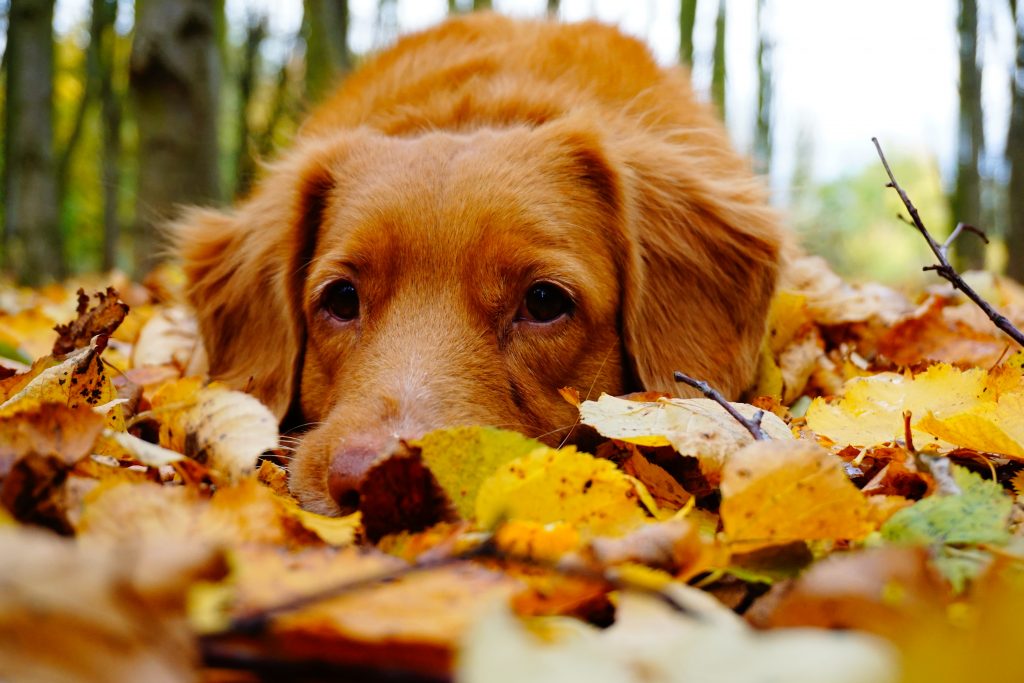Essential oils are highly complex, highly potent and highly volatile plant derived compounds. Studies have shown that essential oils possess therapeutic benefits that could be beneficial to humans as well as animals, such as dogs. To maximize the benefits, essential oils are to be used with precaution and preferably, professional guidance.

There is no such thing as too much of a good thing and that applies to essential oils, which is why they are to be sparingly and at most, in moderation. It is common to assume that essential oils are safe and harmless because they are natural but natural doesn’t always mean safe. In fact, they can be highly toxic if misused.
When used properly and correctly, essential oils can improve your general wellbeing by promoting a sense of tranquillity, increase cognitive function for better focus and productivity, and improving your overall mood. When it comes to dogs, it can help to calm anxiousness and aggression.
It is important to note that animals’ bodies in general do not process chemicals the same way humans do. Essential oils generally aren’t harmful to humans but for dogs, there are only a limited amount of essential oils that are safe and the rest can be detrimental to their health, especially puppies, elderly dogs and dogs with liver disease.
It is important to identify which essential oils are safe for your dogs and which aren’t. Essential oils those are poisonous/toxic to dogs (not an exhaustive list):
- Anise
- Cinnamon
- Citrus
- Clove
- Eucalyptus
- Garlic
- Juniper
- Pennyroyal
- Peppermint
- Pine
- Sweet birch
- Tea tree
- Wintergreen
- Yarrow
- Ylang ylang
Essential oils are that are generally safe to be used on/around your dog:
- Cardamom
- Chamomile
- Fennel
- Frankincense
- Ginger
- Helichrysum
- Lavender
- Myrhh
- Rosemary
Furthermore, dogs have more enhanced olfactory receptors. Therefore, what may smell aromatic to their owners can actually be overwhelming to them. It is best to diffuse essential oils in an open space and if you’re diffusing it in an enclosed space, make sure your dog has a way out so they can leave before it gets too much for them.
If you’re a pet owner using essential oils around your dog, you have to be observant. Pay attention to how they’re reacting to the essential oils. It is also important to wash your hands thoroughly if you were using essential oils topically before, because your dog may lick you and accidentally ingest the essential oil, leading to essential oil poisoning.
How to know if your dogs are reacting negatively to essential oils? Here’s what to look out for:
- Changes in behavior
- Constantly pawing or scratching around the face and mouth
- Difficulty breathing
- Difficulty walking (trembling, stumbling, wobbling)
- Excessive drooling
- Fatigue
- Low heart rate and body temperature
- Redness around their skin, lips, tongue, gums
- Vomiting
- Watery nose or eyes
If your dog exhibits these symptoms, bring them to the vet immediately. The American Kennel Club advises that if you want to use essential oils safely with your dogs, talk to your veterinarian. It is strongly advisable that you consult with your vet before using essential oils on your dog, even if they’re pet-friendly. Also, make sure you keep essential oils where they don’t have access to prevent them knocking over essential oils, licking them and ingesting by accident.